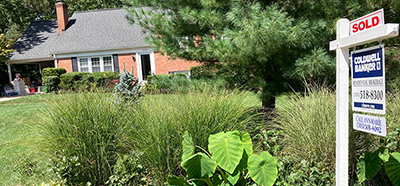
Home Flipping Profits Fall to 10-Year Low

MBA NewsLink Staff
Although home flipping increased by more than 26 percent in 2021, ATTOM, Irvine, Calif., said gross profit margins fell to their lowest level in 10 years and at a pace not seen in 15 years.
The company’s 2021 U.S. Home Flipping Report showed 323,465 single-family homes and condos in the United States flipped in 2021, up 26 percent from 2020 (257,091), to its highest level since 2006. Flips represented 5.5 percent of all home sales nationwide in 2021, down from 5.8 percent in 2020 and 6.1 percent in 2019.
But even as quick-turnaround sales by investors shot up, gross profit margins on home flips in 2021 sank to their lowest level in more than a decade after dropping at the fastest pace in more than 15 years. Homes flipped in 2021 typically generated a gross profit of $65,000 nationwide, down 3 percent from $67,000 in 2020. This translated into just a 31 percent return on investment compared to the original acquisition price – the lowest margin since 2008.
Additionally, the latest ROI (before accounting for mortgage interest, property taxes, renovation expenses and other holding costs) fell from 41.9 percent in 2020 and 40 percent in 2019. The decline in the ROI also marked the steepest drop since at least 2005, resulting in margins that were commonly down by 20 percentage points from the 51 percent peak over the past decade, hit in 2016.
“While gross profits were lower for fix-and-flip investors in 2021, there may have been offsets that protected net profits,” said Rick Sharga, ATTOM executive vice president of market intelligence. “Fewer flippers financed their purchases, so their cost of capital was lower. And it took less time to execute a flip, reducing holding costs, and suggesting that less extensive – and less expensive – repairs were needed to bring the properties to market. A lot of the mark-up on fix-and-flip properties historically has come from the value of those repairs, but so have a lot of the costs that reduce net profits.”
The report said investors saw their gross profit margins dip for the fourth time in five years as the median value of the homes they flipped rose more slowly than the median price they paid to purchase properties – 21.1 percent versus 31.3 percent. The decline in home-flipping profits may represent a rare crack in the foundation of the U.S. housing market, which otherwise boomed in 2021 both because of and in spite of the worldwide Coronavirus pandemic.
Sharga noted throughout the pandemic, a surge of buyers flooded the market amid a confluence of key factors. Tops among them have been a combination of historically low mortgage rates and a desire of many households largely unscathed financially by the pandemic to trade densely populated virus-prone areas for the perceived safety and wider spaces offered by a single-family home and yard.
Other report findings:
–Home flips as a portion of all home sales decreased from 2020 to 2021 in 110 of the 209 metropolitan statistical areas analyzed in the report (53 percent). Nine of the 10 biggest decreases in annual flipping rates among MSAs came in the Northeast and West.
–Home flipping rates increased from 2020 to 2021 in 99 metro areas with sufficient data to analyze (47 percent).
–Nationally, the percentage of flipped homes purchased with financing decreased in 2021 to 38.7 percent, down from 41 percent in 2020 and from 39.9 percent in 2019. Meanwhile, 61.3 percent of homes flipped in 2021 were bought with all-cash, up from 59 percent in 2020 and from 60.1 percent two years earlier.
“In an environment where mortgage rates are rising as rapidly as they are today, investors buying with cash are at a distinct advantage over consumer homebuyers,” Sharga noted. “The combination of rising home prices, rising mortgage rates and rising inflation is undoubtedly creating affordability issues for many prospective buyers, so it’s possible that there will be less competition overall for the limited inventory of homes available for sale.”
–With median resale prices on home flips rising more slowly in 2021 than they were when investors were buying properties, the gross profit margin on the typical flip in the U.S. last year fell to 31 percent – the lowest level since 2008. The 10.9 percentage-point drop from 2020 exceeded any decline since at least 2005.
–Home flippers who sold homes in 2021 took an average of 153 days to complete the flips, the lowest number since 2012. Last year’s average was down from 182 days for homes flipped in 2020 and 178 days in 2019.
–Of the 323,465 U.S. homes flipped in 2021, just 8.2 percent were sold to buyers using a loan backed by the Federal Housing Administration. That marked the smallest percentage since 2007, and was down from 13.9 percent in 2020 and 14 percent in 2019.
